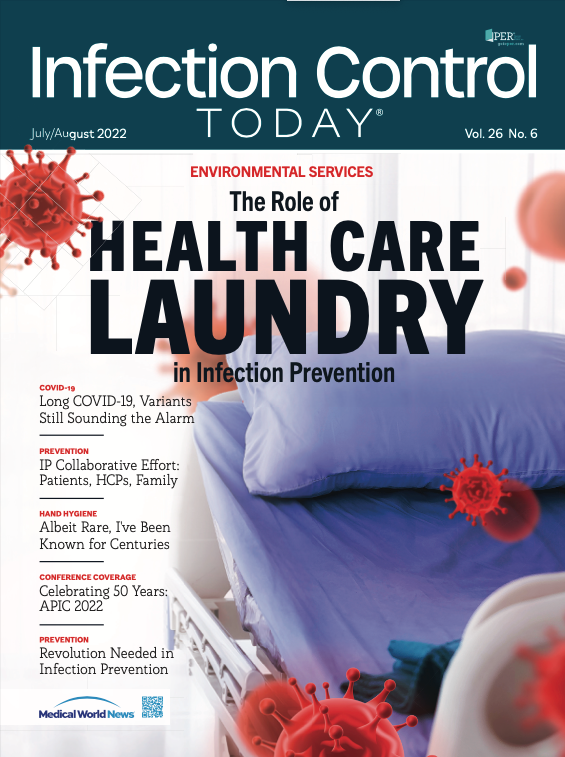Testing Biosafety Measures Should Be Appropriate Not Excessive
Biosafety risks for patients with SARS-CoV-2 may be overlooked, and some control measures may bring about cross-contamination of the tests being done and cause biosafety accidents.
Biosafety Risk Assessment (Adobe Stock)

During the COVID-19 pandemic, the biosafety risk assessments for nucleic acid testing were called for by health officials. However, other biosafety reviews and control reports were less often conducted for other laboratory tests. These biosafety risk assessments should be re-enforced before testing COVID-19 patients’ specimens.
A study recently posted in the American Journal of Infection Control, “Biosafety risk assessment and risk control of clinical laboratory in designated hospitals for treating COVID-19 in Chongquing, China,” discussed this topic and the conclusions. During the COVID-19 pandemic, the Chinese health authorities have adopted a series of effective measures, including nucleic acid testing of SARS-CoV-2 among large-scale populations along with the timely and effective diagnosis and treatment of COVID-19, which has played a key role in the control of the epidemic in China.
The investigators found that “[t]he most important aspect of biosafety risk assessment is to take appropriate but not excessive control measures for biosafety risk against the risks of different hazard degrees, which can not only reduce the risk to an acceptable range but also save resources and improve the work efficiency,” the investigators wrote in the study. “For the same pathogenic microorganism tested in different test activities, the hazard degrees of biosafety risk existing in those test activities are different, and they should be operated in laboratories with different biosafety levels. Therefore, it is inappropriate to unilaterally emphasize that the biosafety level of the laboratory should be consistent with the hazard level of pathogenic microorganisms tested in the laboratory.”
At present, despite many laboratory leadership members emphasizing biosafety assessment, the leadership has ignored biosafety risk management after the assessment. “Even if the subsequent test activities or the pathogenic microorganisms exposed to the laboratory personnel had changed, the biosafety risk assessment was not restarted, and the biosafety risk control did not change accordingly. Biosafety risk management is based on self-inspection and dynamic monitoring.” the investigators said.
The investigators determined that the residual risk after the implementation of the control measures was acceptable.
If clinical laboratory workers testing SARS-CoV-2 used a nucleic acid preservation solution containing viral inactivators, the biosafety risk in the process of detecting the nucleic acid of SARS-CoV-2 will be low. Since patients in China infected with SARS-CoV-2 are sent to designated hospitals for treatment, except for detecting nucleic acid of SARS-CoV-2, other laboratory tests such as bacterial culture may also be carried out while the patients are being treated. However, the investigators said, in addition to nucleic acid testing, biosafety risks in the testing of these items for patients with COVID-19 might be ignored. “Therefore, we identified and evaluated risks in these detection processes and formulated appropriate, but not excessive control measures for biosafety risk, to improve the work efficiency and prevent biosafety accidents.”
The investigators identified 32 risks in total in the following categories:
- Personnel,
- Disinfectants,
- Process of testing,
- Biosafety equipment,
- Facilities and environment,
- Waste after testing,
- Emergency procedures.
Key risks included the following:
- A risk of personal infection or environmental contamination due to malfunction of the airflow or filtration of the biological safety cabinet (BSC),
- A risk of environmental contamination, or personnel infection resulting from the concentration of laboratory disinfectants being improperly selected, and the disinfection effect is not achieved,
- A risk that the personnel's hands are contaminated by the specimen tubes, which are contaminated during specimen collection during the process of specimen reception,
- A risk of contaminating the environment or items by hands contaminated when remove from the BSC during the process of operation in the BSC,
- A risk of the lens and stage of the microscope being contaminated by the specimen during the microscopic examination of fecal specimens.
Biosafety risk monitoring includes monitoring changes in test activity, pathogenic microorganisms involved, monitoring changes in the dose of pathogenic microorganisms used, specimen types, and monitoring for unidentified risks.
Finally, the investigators recommend that the laboratory leadership should annually review the suitability of laboratory biosafety risk assessment and biosafety risk control, and start risk assessment promptly, which is also a part of risk management.
